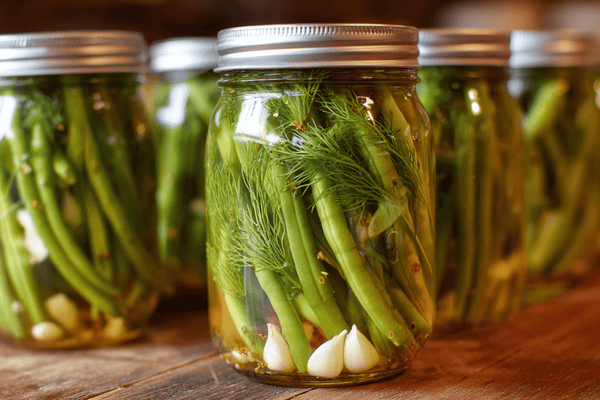
You’ve probably eaten tons of sushi and enjoyed several amazing dishes at your local sushi restaurant. When attending these places, I highly doubt that you would have thought twice about the fact that you’re eating raw fish. That is, after all, what sushi is and we accept it for exactly that.
But when it comes to preparing sushi at home, domestic chefs suddenly become much warier about this dish. There are a lot of concerns about food safety that are spinning around in the minds of even the most confident chef. But there really is no need to worry. Provided you buy fresh fish and the highest quality fish and prepare it correctly then there should be no cause for concern.
However, there is still the question at the back of everyone’s mind when buying fish for sushi: "is this sushi-grade fish?".Well, you might be surprised to learn the truth behind that phrase. In this guide, we will tell you how to buy sushi-grade fish, what the term means and give you a whole host of tips on making the best sushi and sashimi at home.
Table of contents
- What Does 'Sushi Grade' Mean?
- The Effect of Temperature On Raw Fish
- Can You Get Parasites From Eating Raw Fish?
- But There Are Some Concerns
- How to Safely Prepare Sushi at Home
- Be Vigilant in Choosing a Fish Market
- Opt for Whole Fish
- Keeping the Fish Cool
- Do the Hard Work Yourself
- Everything Should Be Super Clean
- Visually Check for Parasites
- Final Thoughts
What Does 'Sushi Grade' Mean?
If you’re into sushi and sashimi then you may have come across the terms sushi-grade and sashimi grade. But, let me be honest with you; there's no such thing! The 'sushi grade' label is something that is used purely as a marketing term to put the minds of the western consumer at ease and confirm that the fish is high quality and fresh and fit for raw consumption, just as it should be for any other fish dish.There’s something about the western culture that causes us to go wild over things that Asians wouldn’t think twice about. The quality of raw fish being one such example of this. The development of the term 'sushi grade', and indeed 'sashimi grade', isn’t anything other than a way of telling the consumer that the fish is OK to eat. But since there are no governing bodies or associations that determine the quality of the fish, there’s no real yardstick to compare it to. It essentially comes down to the honesty and trustworthiness of the fish supplier.
Back in 2004, a fish supplier called True World Foods was trying to grow its client base. Many Japanese restaurants were limiting their raw fish dishes to tuna. Of course, True World Foods wanted to make more sales so they often used the term 'sushi grade' to convince buyers that all types of their fish was suitable to be eaten raw.
The Effect of Temperature On Raw Fish
 Contamination from bacteria is one of the biggest concerns for people when they are about to eat raw fish. If you have ever taken part in a food safety course, you will have learned about why it is important to store food at the correct temperature to avoid contamination.
Contamination from bacteria is one of the biggest concerns for people when they are about to eat raw fish. If you have ever taken part in a food safety course, you will have learned about why it is important to store food at the correct temperature to avoid contamination.The reason that FDA guidelines recommend freezing your fish prior to serving is that when properly frozen, the freezing process and low temperatures will kill off any potential parasites like worms. However, when it comes to bacteria, freezing will not kill them but merely put them into a hibernation-like state. This is why you’re told to thaw and thoroughly cook your food because the hot temperatures do kill parasites and bacteria.
Many people, whether that be fish suppliers, chefs or home cooks, or anyone else involved in the process of getting the fish from the water to your table, could temperature-abuse the meat. This essentially means keeping the fish at an unsuitable temperature, allowing bacteria to grow and not ensuring a parasite destruction guarantee.
If you want to avoid the growth of bacteria, you will need to ensure that your fish is kept below 4ºC. That said, there are some types of fish sold, such as yellowfin tuna that, even when kept at this low temperature, can still grow bacteria that could cause you some nasty health problems.
But it isn’t only temperature that plays a role in keeping the fish as free from bacteria as possible. Anyone handling the fish at any point in the process must ensure the very best hygiene practices to further eliminate the risk of bacterial infection. But we will look at some cleaning and preparation tips later in this guide.
Can You Get Parasites From Eating Raw Fish?
 One of the biggest concerns for sushi fans is the potential of getting parasites from eating raw fish. For starters, sushi wouldn’t be anywhere near as popular as it is if anyone who ate it developed parasites in their gut. But of course, there is always going to be a risk of contamination but if you’re buying from reputable sellers, this risk is minimal.
One of the biggest concerns for sushi fans is the potential of getting parasites from eating raw fish. For starters, sushi wouldn’t be anywhere near as popular as it is if anyone who ate it developed parasites in their gut. But of course, there is always going to be a risk of contamination but if you’re buying from reputable sellers, this risk is minimal.In the USA, the FDA provides suppliers with recommendations for eliminating parasites and much of this involves freezing the fish. As a result of this, there are hardly any reports of infections in the United States. However, hop over the Pacific ocean and head to Japan and you’ll find that the practice of freezing fish is pretty much non-existent.
Sashimi would normally see the fish being frozen but in Japan, it’s certainly not a requirement. And what might surprise you even more, is that there aren’t a whole host of people being contaminated with parasites. In fact, according to the FDA’s Bad Bug Book, there are only around 1000 cases of worm infections annually in Japan and that’s out of the country’s entire population which exceeds 127 million people.
With that in mind, it is important to remember that parasitic infections don’t always come with symptoms. It’s perfectly possible to be infected and not even notice. So, there could be higher numbers of cases, but they’re not being reported as the sufferers aren’t aware of the fact. But one should also remember that there is a risk of being infected with a parasite from a whole host of other foods and situations, it’s not limited to raw fish. Plus, you could just as easily contract something like food poisoning from so many foods like eggs, prawns, chicken etc and we eat those without a second thought.
But There Are Some Concerns
I’d be lying if I told you that you shouldn’t be worried about parasites full stop. While many will pass through your body without you even noticing, there are some that might cause more serious problems and this is worth being aware of when you’re preparing sushi at home.
Some fish spend part of their life in fresh water and the other part in saltwater; they’re known as anadromous species and salmon is a prime example of this. These fish are prone to certain types of parasites like broad fish tapeworms and these infections aren’t as mild as other types of worm. Furthermore, any type of fish from the cod family isn’t considered to be as safe as other species.
If you find yourself infected by parasites that have come from marine fish then you could experience an array of different symptoms. Primarily, you may notice stomach pain and nausea or even vomiting. This could quite easily be confused with food poisoning and other food-borne illnesses. However, at the more severe end of the spectrum, victims of these parasites could end up needing surgery to remove parts of the digestive system.
Therefore, if you have eaten sushi and find yourself displaying any symptoms, it’s important to get yourself checked out as soon as possible and not just assume you have food poisoning.
How to Safely Prepare Sushi at Home
While there are risks involved in preparing raw fish at home, they are minimal. However, if you take the right approach in your preparations then there really isn’t anything to worry about. Your sushi will be no more dangerous than anything else you make in your kitchen. When preparing this dish, the following tips will help you to stay safe.
Be Vigilant In Choosing a Fish Market
 You wouldn’t buy fruit and vegetables from a dirty stall where everything looked withered and soft, would you? Then why would you buy fish from a fish market that was anything other than pristine? Of course, every fish market or supplier is going to tell you that they are the best and that their produce is far superior to anything else but that doesn’t mean you can trust their claims. So how do you tell the good from the bad?
You wouldn’t buy fruit and vegetables from a dirty stall where everything looked withered and soft, would you? Then why would you buy fish from a fish market that was anything other than pristine? Of course, every fish market or supplier is going to tell you that they are the best and that their produce is far superior to anything else but that doesn’t mean you can trust their claims. So how do you tell the good from the bad?You should make sure primarily that the fish supplier is operating excellent hygiene standards as this is the basis of good produce. When you go to a fish market, it shouldn’t have a strong smell of fish; that’s a sign that something is off. Instead, the air should have a salty or marine smell which is much more conducive with fresh, clean produce.
However, you will also need to look at how the fish is presented. If the produce is presented in or on ice then that’s a good sign but there should also be good drainage as this prevents excess moisture sitting around the food.
Moreover, separate pieces of fish should not be touching one another as this reduces the risk of cross-contamination. You will also notice that in good fish markets, the fish is displayed in a posture similar to how it would sit when it was swimming as this ensures the innards of the fish don’t set in an unnatural manner.
Opt for Whole Fish
There are some fish fillets that are not optimal for use in raw dishes so you will want to avoid these where possible. Instead, it’s better to buy whole fish and prepare them yourself at home. This way you can be sure of their suitability.What’s more, it is far easier to determine how fresh a fish is when it is still whole. You will be able to tell by looking at the gills which should be red in colour and the eyes which should be bulbous. The fish’s flesh should be firm and without any imperfections or blemishes. Once you familiarise yourself with how to spot the best catch, you’ll be confident in buying fresh fish at any market.
But one important thing to keep in mind is, no matter how fresh the fish is, it isn’t a good idea to buy cod for sushi. These fish are much more susceptible to parasitic infections and anyway, their high moisture content and watery nature mean they won’t taste anywhere near as good.
Keeping the Fish Cool
We have impressed the importance of keeping fish at the right temperature when buying it for sushi. This is the best way to reduce the risk of parasites that could be in the gut, moving into the flesh of the fish.When a fish dies, it experiences rigour mortis, just like a human would. But this can impact the quality of the flesh including the texture and colour as well as the taste and workability. A good way to ensure that it remains at its best is to allow it to rest for a little while after taking it out of the refrigerator and before cutting it into fillets.
It’s best to fillet your fish right before you want to use it but it is possible to do it in advance. That said, if you aren’t going to eat it straight away, you will want to make sure that the fillets are as cold as possible and that they remain covered until you use them.
Do the Hard Work Yourself
 We know that scaling and gutting the fish is messy work but it’s much better to do it yourself than to allow the fishmonger to do it for you. This is because you are in control of hygiene so you can feel a lot more confident.
We know that scaling and gutting the fish is messy work but it’s much better to do it yourself than to allow the fishmonger to do it for you. This is because you are in control of hygiene so you can feel a lot more confident.In order to do this, you will need some special equipment but if you’re going to be making sushi or sashimi a lot, it’s worth the investment. You will need a set of fish tweezers, a boning knife and a fish scaler. When you have removed the guts, always make sure to rinse out any remaining blood or debris.
Everything Should Be Super Clean
The key to preparing healthy and safe sushi at home is keeping everything sanitary. This includes your tools, your workspace, your hands and anything else that is going to come into contact with the fish. Before and after cutting the fish, you should clean your cutting board using a bleach-based solution. Don’t attempt to dry it afterwards, let the air do its thing for a while. You can then go in with paper towels to remove any excess water.Once your fish is cut and prepared, you will need to then make sure that you store them on a clean plate. Or if you are going to keep the fillets in the fridge, cover them and keep them at as cool a temperature as possible.

Visually Check for Parasites
It might sound obvious but one of the most effective ways to make sure you aren’t exposed to parasites is to actively look for them. They’ll be pretty obvious when you are cutting and preparing the fish so even an amateur can spot them. This applies even to fish that was frozen as some may remain.One of the most common parasites in fish is known as anisakid and these are larvae that can be anywhere from white to brown in colour and around 10mm in size. There is also the possibility of spotting broad fish tapeworms which are around the size of a grain of rice but can be easily removed using a pair of fish tweezers.
Final Thoughts
Sushi is one of the most famous and popular Japanese dishes in the world. So much so that there are millions of sushi restaurants and sashimi eateries around the globe and people are enjoying meals here every day. But since sushi and sashimi are made using raw fish, some people get a little squeamish and worry about bacteria and parasites and therefore if the fish is safe to eat raw.There is something called 'sushi grade' and 'sashimi grade' fish but this is nothing more than a marketing ploy to reassure the consumer that the fish is safe to consume raw. In reality, there is no governing body that regulates the suitability of raw fish and raw seafood for use in sushi dishes.
The best way to avoid infections is to ensure that you buy the freshest fish you can, carefully prepare your fish and ensure excellent hygiene practices.



